Dr.
Gerald S. Hecht
Associate
Professor of Psychology
College
of Sciences
webmaster@psiwebsubr.org
PSYC
381 - Sensation & Perception Exam 4 Study Guide
Chemosensory Perception
-
taste
and smell represent phylogenetically old sensory system
-
they
are the sensory systems that let us detect & discriminate the
molecules in our environment
-
these
senses help to link the external environment with internal needs, e.g.
hunger, thirst, etc.
- are vivid emotionally & perceptually important
nutritionally for regulating food intake
Distal Stimulus Properties
associated with organic molecules
sweetest compounds are the proteins thaumatin & monellin can be
detected at concentration of 10-8 M
often associated with harmful stimuli
not know which chemical structures elicit the taste
acids elicit sour taste
a molecule that breaks into its ions, the ions pass through a channel
in the cell membrane
Initial Transduction at the Receptor
-
several different events underlie the transduction of the 4 basic
tastes
- bitterness & sweetness are signaled by second messengers
-
saltiness & sourness are signaled by direct ion entry from the
distal stimulus
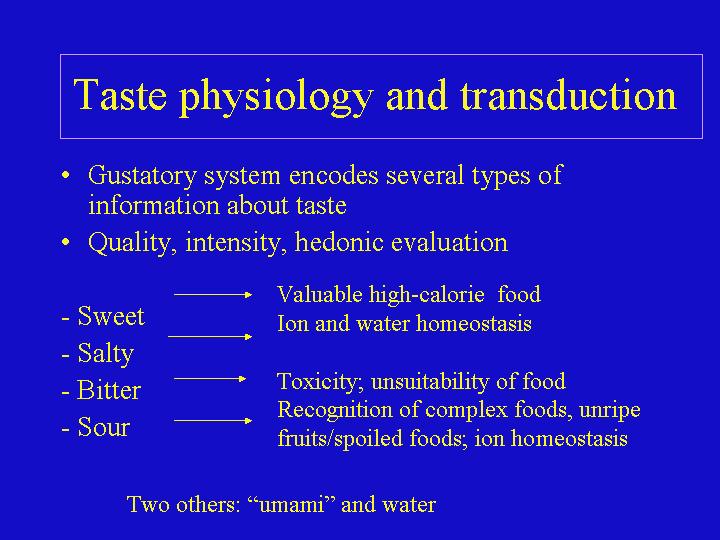
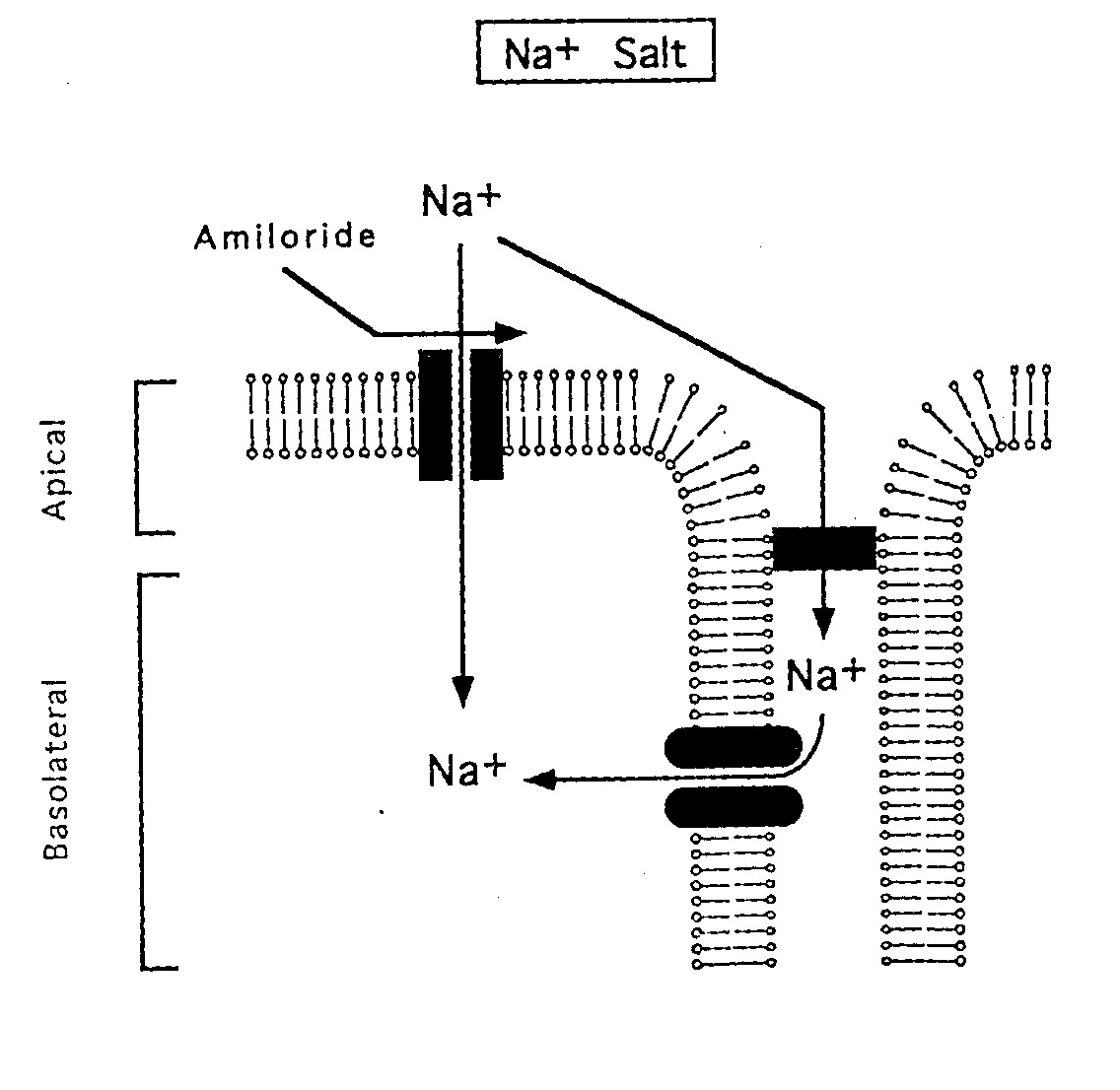
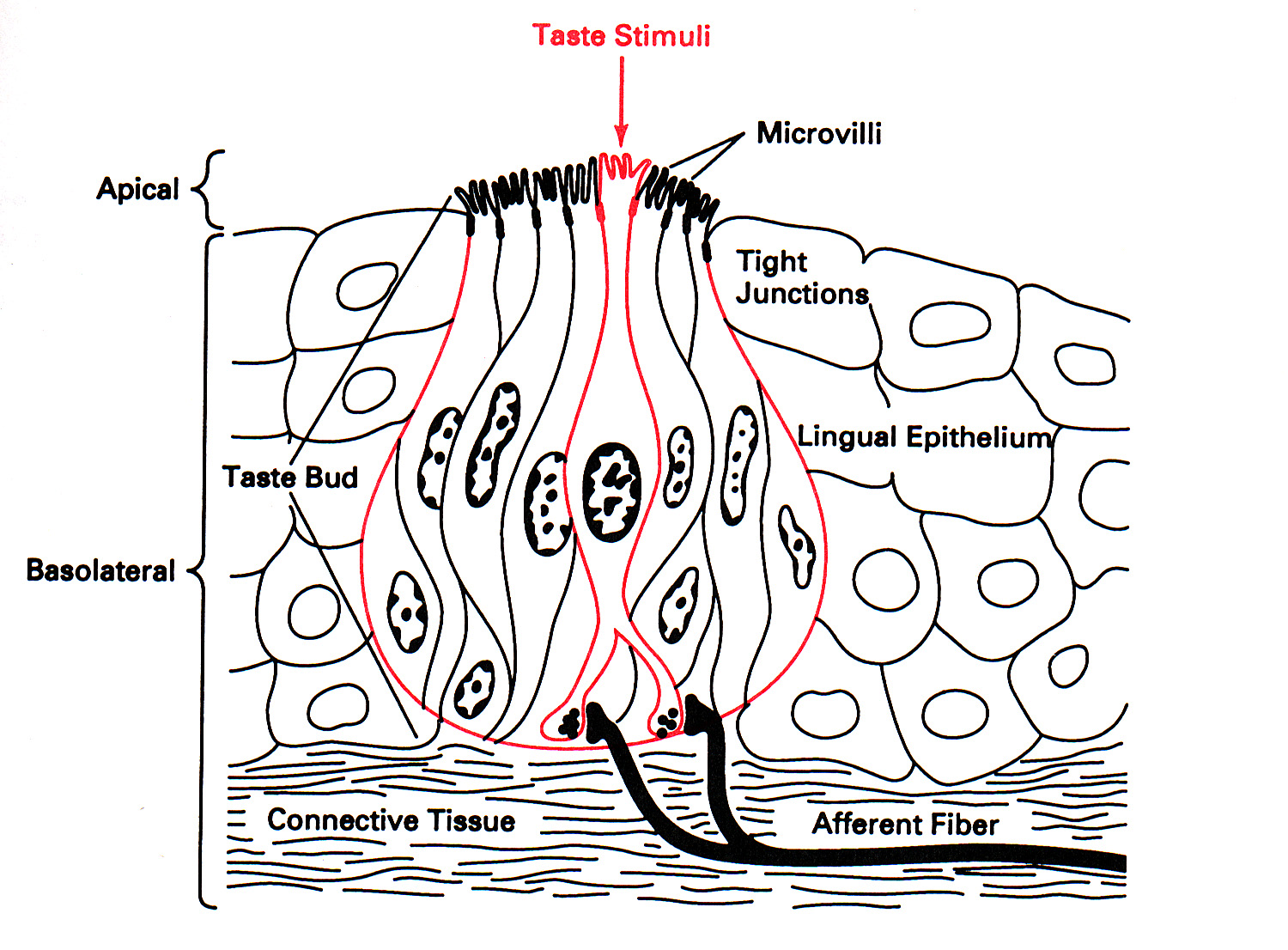
Different Parts of the tongue are more
sesnsitive to the different
tastes:
tip = sweet
sides = sour (middle and rear)
and salty (closer to the tip)
back and roof of mouth
= bitter
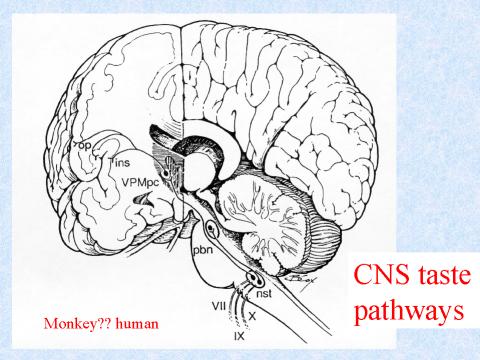
Transduction Pathways
Into the Brain (CNS)
The
axons of all taste receptors form the Chorda Tympani Nerve—This
is where it goes into the CNS for processing-- First to the NTS, then
to the PBN, then to the Thalamus and finally to the Insular Gustatory
Cortex.
How
are the different tastes encoded?
-
labeled
pathway theory -- nerve fiber responds to only one taste
(specific pathway)
-
across-fiber
pattern coding -- central neuron compares
pattern of input from a group of fibers, each fiber is more sensitive
to a particular taste but also responds to other taste stimuli
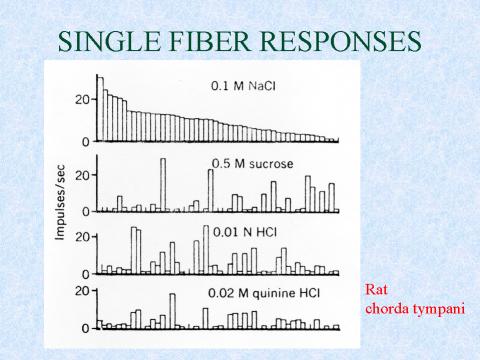
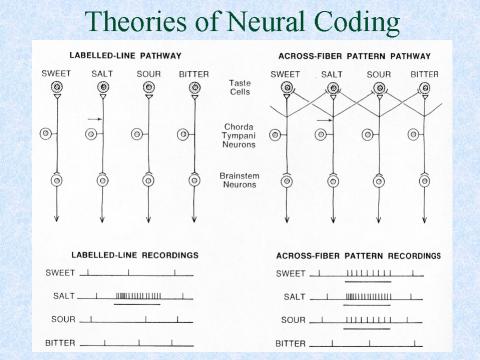
taste
coding involves comparison of activity across groups of fibers
responding preferentially to different tastes (contrast)
NOTE: The Second Synapse in the Brain (the
PBN) or Parabrachial
Nucleus of the Pons integrates information from taste, smell, and
visceral and inner ear neurons. This is where we learn taste
preferences and aversions through Pavlovian (Classical) Conditioning
(learning):
Psychological
Phenomena (Reflexive Responses & Pavlovian Learning)
I. REFLEXIVE RESPONSES TO TASTE
STIMULI
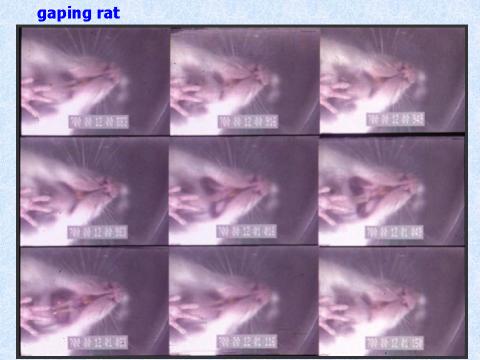
Above is a rat “gaping” after tasting something bitter.
Below is a human infant showing the same “gape” (yucky)
response to a bitter taste on the left and the reinforcing (yummy)
response to a sweet taste on the right.
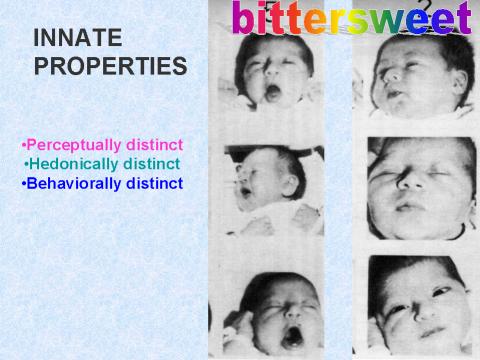
II. PAVLOVIAN
LEARNING WITH TASTE
STIMULI
Garcia's
Conditioned Taste Aversion Paradigm
Here is the Outline for Garcia's Classic CTA Experiment (turning a
“yummy” taste into a “yucky” taste by way of
Pavlovian learing:
-
Phase 1 -- Rats are
divided into the following three groups:
Group 1 -- Emitic drug will be given after Phase 2, rats get sick
½
hr. later.
Group 2 -- X-rays will be given after Phase 2, rats get sick ½
hr. later.
Group 3 -- Each lick during Phase 2 is followed by a painful electric
shock..
-
Phase 2 -- All rats
have ten minutes
access to water.
The water has a slightly salty taste. Each lick produces a click and
flash of light.
-
Phase 3 -- The next day
(rats in groups 1
and 2 have recovered).
The rats are again offered water. The rats in each of the three main
treatment groups are further subdivided into three groups, each
offered water accompanied by only one of the three potential CSs --
salty taste, light flash, or tone. The results for the nine subgroups
are:
|
SALTY TASTE
|
FLASH
|
CLICK
|
1
|
Supress
|
Drink |
Drink |
2
|
Supress |
Drink |
Drink |
3
|
Drink
|
Supress |
Supress |
Conclusion: Animals are biologically prepared to make some
associations easier than others. Specifically we are prepared to
associate tastes with illness rather than a visual stimulus such as a
flash of light.









